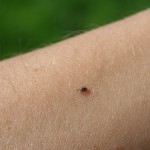 As many as 30,000 cases of lyme disease illnesses are reported each year. For years, the Center for Disease Control and Prevention has known that many doctors don t report every case, and the true number was perhaps much higher. They were right. The number of cases has skyrocketed to nearly 300,000 recently; the illness is 10 times more common than previously thought.
As many as 30,000 cases of lyme disease illnesses are reported each year. For years, the Center for Disease Control and Prevention has known that many doctors don t report every case, and the true number was perhaps much higher. They were right. The number of cases has skyrocketed to nearly 300,000 recently; the illness is 10 times more common than previously thought.
The new figure comes from a survey of seven national laboratories, a national patient survey and a review of insurance information. It s giving us a fuller picture and it s not a pleasing one, said Dr. Paul Mead, who oversees CDC s tracking of lyme disease.
A total of 96 percent of U.S. Lyme disease cases reported have come from 13 states, predominantly in the Northeast Connecticut, Delaware, Maine, Maryland, Massachusetts, Minnesota, New Hampshire, New Jersey, New York, Pennsylvania, Vermont, Virginia and Wisconsin.
The disease, named after Lyme, Connecticut, where it was first identified in the 1970s, is caused by Borrelia burgdorferi bacteria, which is transmitted to humans through the bite of infected deer ticks tiny spider-like critters no bigger than the tip of a pin. Symptoms include fever, headache and fatigue, and sometimes a very telling rash around the tick bite. Antibiotics are usually prescribed to treat the disease, although if left untreated, the infection can lead to joint pain, heart problems, and neurological issues.
The new study from the CDC did not find anything to suggest the disease is more geographically spread, Mead said.
ACSH s Dr. Ruth Kava commented The best way to deal with Lyme disease is to prevent it. The ticks climb up on tall grasses and hitch rides on animals and people that pass by. People should check themselves for ticks carefully after spending time in tick-infested areas, and use appropriate repellents to avoid getting bitten. For more information, see ACSH s publication, Summer Tips 2013.